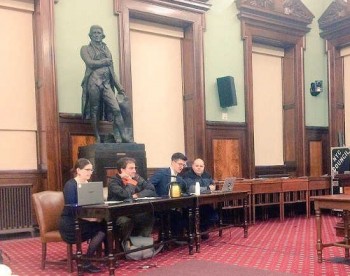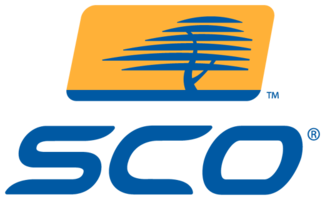These are the ten most read articles on FOSS Force for the month of February, 2016. 1. SourceForge and Slashdot Have Been Sold by Christine…
FOSS Force
The Raspberry Pi Foundation has officially announced the launch of the Raspberry Pi 3, which is the first Pi to come with built-in wireless capabilities and a 64-bit processor.
The Pi Podcast was able to get an exclusive interview with Raspberry Pi founder Eben Upton on what exactly is the Raspberry Pi 3 and how it stacks up to the rest of the Raspberry Pi lineup. Here’s the takeaway from the interview.

Photo source: FCC
The FOSS Force Poll
Our latest poll indicates that our reader’s would support legislation that would prohibit tracking by advertisers.
Back on February 15 when we ran an article calling for a ban on advertisers’ practice of tracking users who just happen to drive by an ad, much less click on it, we ran a poll to find out what you think. Actually, we were pretty sure we already knew what you thought. You tell us everyday, either in the comments section to our articles or by blocking ads here on FOSS Force. The poll was mainly to put some numbers to what we already knew.
The poll was pretty straight forward. “Should advertisers and ad agencies be forbidden to track users as they surf the web?” we asked. There were three answers offered, “Yes,” “No” and “With exceptions.”
As far as FOSS Force polls go, the numbers were pretty low on this one. In all, 143 of you took the poll, a minuscule sampling by any measure, but with conclusive results: You’re completely against having your journeys through cyberspace tracked.
On Tuesday, representatives of four FOSS friendly agencies testified before a New York City committee considering bills that would mandate the use of FOSS by city government.
“Free and open source software has many advantages over proprietary software,” Karen Sandler, the executive director of the Software Freedom Conservancy, testified Tuesday before the New York City Council Committee on Contracts. “Studies show that, over time, free software is safer from vulnerabilities. Free software is auditable — security and functionality can be verified upon inspection. Anyone can independently assess the software and its risks. Developers can more easily and quickly repair discovered vulnerabilities or bugs (and bugs are very common in all software – the Software Engineering Institute estimates that an experienced software engineer produces approximately one defect for every 100 lines of code). Free software removes dependence on a single party, as anyone can make changes to their version of the software. And municipalities can hire any contractor on the open market to work on the software.”

Here’s a sneak preview of a poll that will go up in a front page article in the next day our two. Feel free to…
The hackers who compromised the Linux Mint site on Saturday were evidently not the brightest stars in the dark web, but they managed to create a mess for the Mint crew to clear away.
Everybody understands that none of a stage magician’s tricks are real. The one thing that is real, and which a successful illusionist must practice to perfection, is the art of misdirection — which evidently turned out the be the trick under the sleeves of the cracker/hackers who were responsible for compromising ISO downloads of Linux Mint 17.3 Cinnamon on Saturday.
In the FOSS Force news article on the hack which ran Sunday, we said “the hackers modified the ISO of the Cinnamon edition of Linux Mint 17.3 (Rosa).” We now know that’s not quite true, or at least not in the way we meant. The hackers didn’t bust into the Mint server and modify the binaries waiting to be grabbed by the mirror sites for downloads. Instead, this was a case of misdirection.
The hackers had a copy of Mint with their malicious payload in place, packaged as an ISO image and sitting on a Bulgarian server they controlled, waiting to serve downloads of what is arguably the worlds most popular version of GNU/Linux. The intrusion at Mint was a quick in-and-out to change the URLs in the anchor tags on Mint’s download page for the 64-bit Cinnamon version of Linux Mint 17.3 “Rosa.” Afterwards, users who clicked on a link to download from, say, the Internet Solutions mirror in South Africa, were taken to the hackers’ server in Bulgaria. Let the download begin. Wham, bam, thank you mam.


 The agreement goes on to state: “There is no just reason for delaying SCO’s appeal from such Orders, as the final resolution of SCO’s claims may make it unnecessary, as a practical matter, for the Court to decide the several pending motions concerning IBM’s counterclaims, given SCO’s bankruptcy and its explanation that it has de minimis financial resources beyond the value of the claims on which the Court has granted summary judgment for IBM.”
The agreement goes on to state: “There is no just reason for delaying SCO’s appeal from such Orders, as the final resolution of SCO’s claims may make it unnecessary, as a practical matter, for the Court to decide the several pending motions concerning IBM’s counterclaims, given SCO’s bankruptcy and its explanation that it has de minimis financial resources beyond the value of the claims on which the Court has granted summary judgment for IBM.”

 The Great 2016 Linux Mint Hack: The hack at one of the crown jewels of Linux distros has undoubtedly been the biggest story this week. I’ll not bore you by repeating details which most of you have probably already read by now, but will direct those of you who don’t know to
The Great 2016 Linux Mint Hack: The hack at one of the crown jewels of Linux distros has undoubtedly been the biggest story this week. I’ll not bore you by repeating details which most of you have probably already read by now, but will direct those of you who don’t know to 



